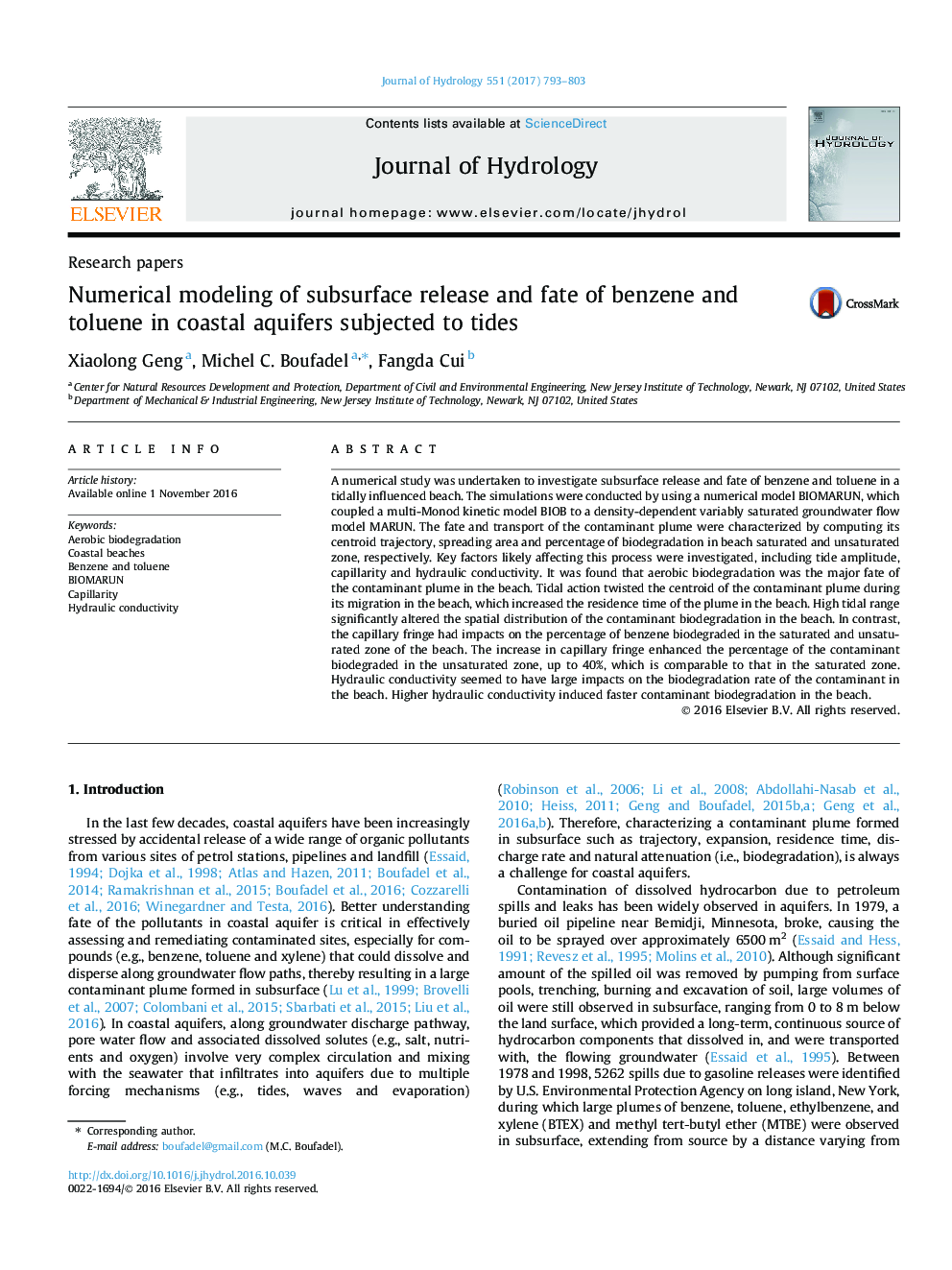| کد مقاله | کد نشریه | سال انتشار | مقاله انگلیسی | نسخه تمام متن |
|---|---|---|---|---|
| 5770878 | 1629903 | 2017 | 11 صفحه PDF | دانلود رایگان |
- Tidal action alters spatial distribution of contaminant biodegradation in beach.
- Capillarity affects fraction of contaminant biodegraded in different beach portion.
- Higher hydraulic conductivity induces faster biodegradation rate in the beach.
A numerical study was undertaken to investigate subsurface release and fate of benzene and toluene in a tidally influenced beach. The simulations were conducted by using a numerical model BIOMARUN, which coupled a multi-Monod kinetic model BIOB to a density-dependent variably saturated groundwater flow model MARUN. The fate and transport of the contaminant plume were characterized by computing its centroid trajectory, spreading area and percentage of biodegradation in beach saturated and unsaturated zone, respectively. Key factors likely affecting this process were investigated, including tide amplitude, capillarity and hydraulic conductivity. It was found that aerobic biodegradation was the major fate of the contaminant plume in the beach. Tidal action twisted the centroid of the contaminant plume during its migration in the beach, which increased the residence time of the plume in the beach. High tidal range significantly altered the spatial distribution of the contaminant biodegradation in the beach. In contrast, the capillary fringe had impacts on the percentage of benzene biodegraded in the saturated and unsaturated zone of the beach. The increase in capillary fringe enhanced the percentage of the contaminant biodegraded in the unsaturated zone, up to 40%, which is comparable to that in the saturated zone. Hydraulic conductivity seemed to have large impacts on the biodegradation rate of the contaminant in the beach. Higher hydraulic conductivity induced faster contaminant biodegradation in the beach.
Journal: Journal of Hydrology - Volume 551, August 2017, Pages 793-803
